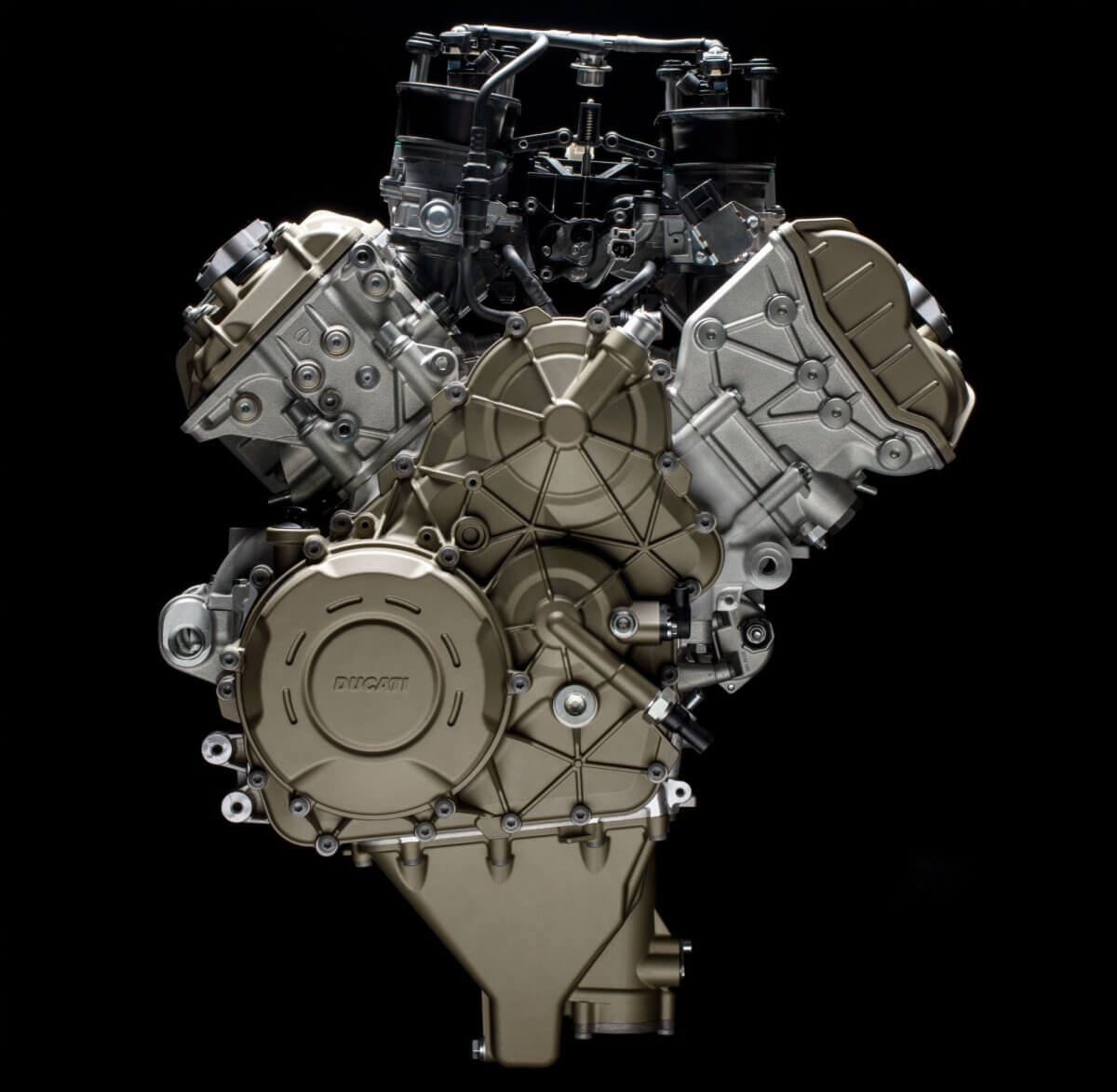Part 2: TEN BEST MOTORCYCLE ENGINES

Here are another three (out of the ten) best motorcycle engines, as we move towards the present day.
4. Kawasaki Z1 (1973)

Kawasaki Z1 engine - courtesy of www.motorcyclistonline.com
Kawasaki and Honda were locked in an arms race to build the world’s fastest production bike throughout the 1970s.
Kawasaki had been developing their own 750cc inline-Four but was surprised by the Honda CB750 which was much more powerful in 1969. They shelved the release of their bike, went back to their shed (okay, factory) and enlarged the engine to 903cc under the codename, “New York Steak.”
The 903cc, DOHC, inline-Four powered the Kawasaki Z1 introduced in 1973 and made 82 bhp which was 14 more than the SOHC CB750. That may not seem to a lot but consider that the bigger engine produced more midrange and peak torque (58 lb. ft.).
As it stood, the Z1 was the fastest production motorcycle of its time and blew everything else away.
5. Harley-Davidson Evolution (1984)

Harley-Davidson Evolution engine
In 1981, the grandson of Arthur Davidson, Willie G. Davidson and Vaughn Beals led a group of 13 Investors to buy the beleaguered Harley-Davidson brand back from the American Machine and Foundry (AMF) for $80 million.
Good news, right? Not really, not yet anyway.
Harley-Davidson had only the Shovelhead engine which was introduced way back in 1966 at that point. It had too much in common with its Knucklehead predecessor; its performance was meager at best and its reliability left much to be desired. Quality had suffered so much under AMF that there was legend that dealers had to stick sanitary pads under the crankcases of new bikes, to avoid oil from dripping onto their showroom floors.
So, the new management went to work on a new engine. Although they kept the traditional 45o V-Twin pushrod layout, the new engine got a thorough update.
The cylinders became aluminum, the combustion chambers were redesigned, flat-top pistons replaced domed ones, the conrods were made stronger, the lubrication system was updated and a new electronic ignition system was introduced. These changes, together with a few others gave the now 1304cc (80 cubic inch), air-cooled, OHV engine 10% more power and 15% more torque (106 Nm). It was lighter, ran cooler and smoother, plus a whole lot more reliable.
The engine was called “Evolution” or just “Evo” among Harley owners and enthusiasts. It was the engine that saved Harley from oblivion.
6. Honda NSR500 (1984)

Honda NSR500 engine (1997) - courtesy of www.reaa.ru
This manic engine would have been on top if it were a Top Ten Countdown, hands down.
It was in 1984 when the NSR500 was ridden the first time by Freddie Spencer who took the 500cc GP crown in 1983 on an NS500 triple. To reduce friction, Honda used only one crankshaft in the V-4 two-stroke, compared to Yamaha and Suzuki’s V-4s that had twin contra-rotating (they spin in the opposite direction of the rear tyre) cranks. The Honda put out 144 bhp, making the competition look like blunt tools in chest.
“Fast” Freddie destroyed the 500GP field in 1985 by winning 8 out of 12 rounds (it was also the same year he won the 250cc GP title).
Australian madman Wayne Gardner followed suit in 1987, by which time the V-4’s cylinder angle was spread from 90o to 112o to improve its breathing efficiency. Eddie Lawson made the jump from Yamaha to Honda and took the title back from Yamaha 1989 after Honda fixed the evil handling chassis in order to cope with more than 160 bhp.
The Honda NSR500 continued to rule the roost into the 90’s with Mick Doohan winning five titles. His teammate Alex Creville also won a title. During that time, Honda turned the fierce V-4 into a “big-bang” engine by firing all cylinders in rapid succession in a bid to increase rear tire grip but Doohan reverted to the old “screamer” motor (fired its cylinders at 90o intervals) when the newcomers started challenging his reign.
Valentine Rossi moved up to the 500 GP class in 2000 and was surprised by the NSR500’s power, which was rumored to be close to 200 bhp. It took one more year for “The Doctor” to capture the title in 2001.
In total, the NSR500 won 130 GP races and 10 world titles in 18 years. It was a high cost to pay for many who rode the bike.